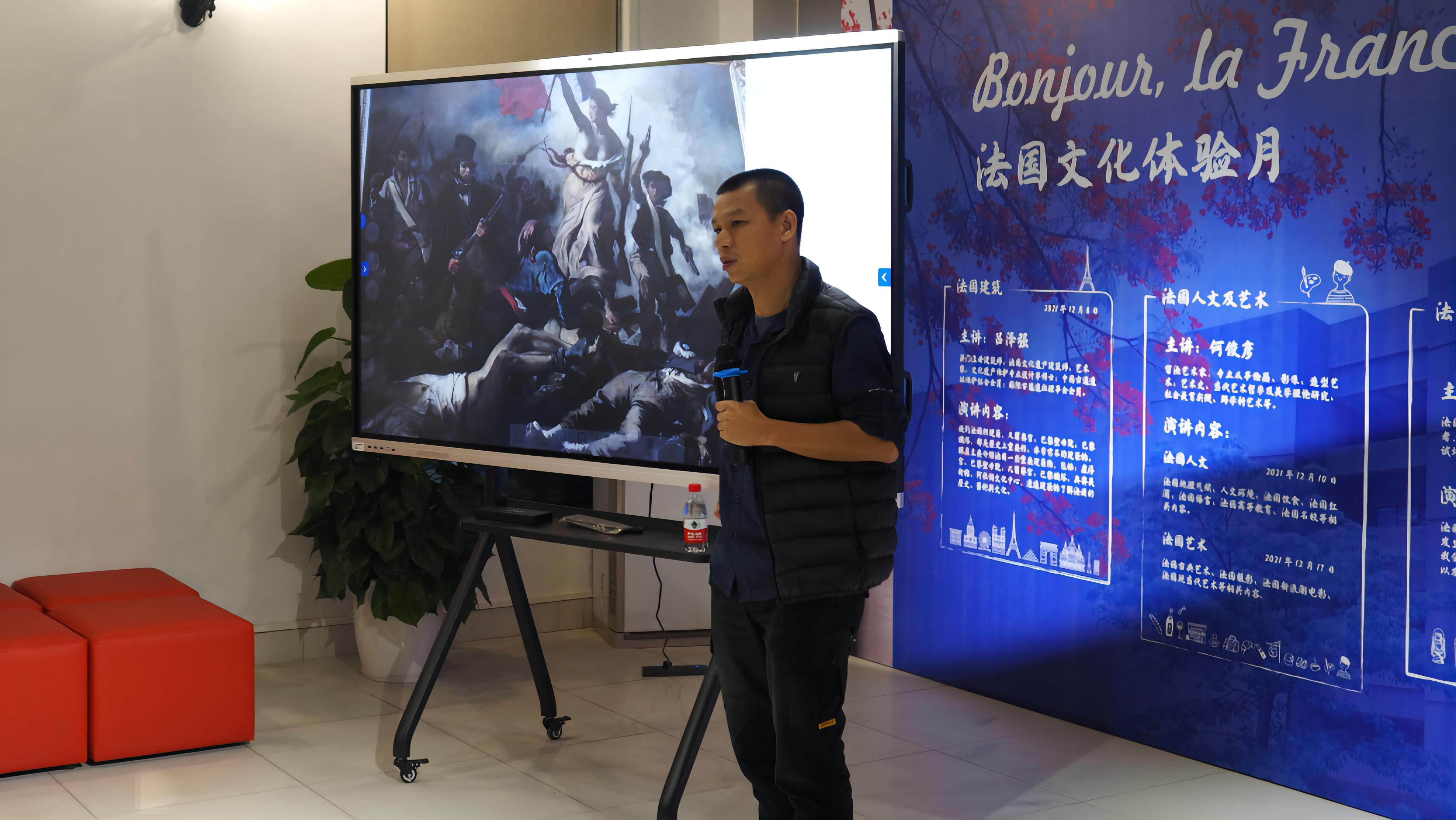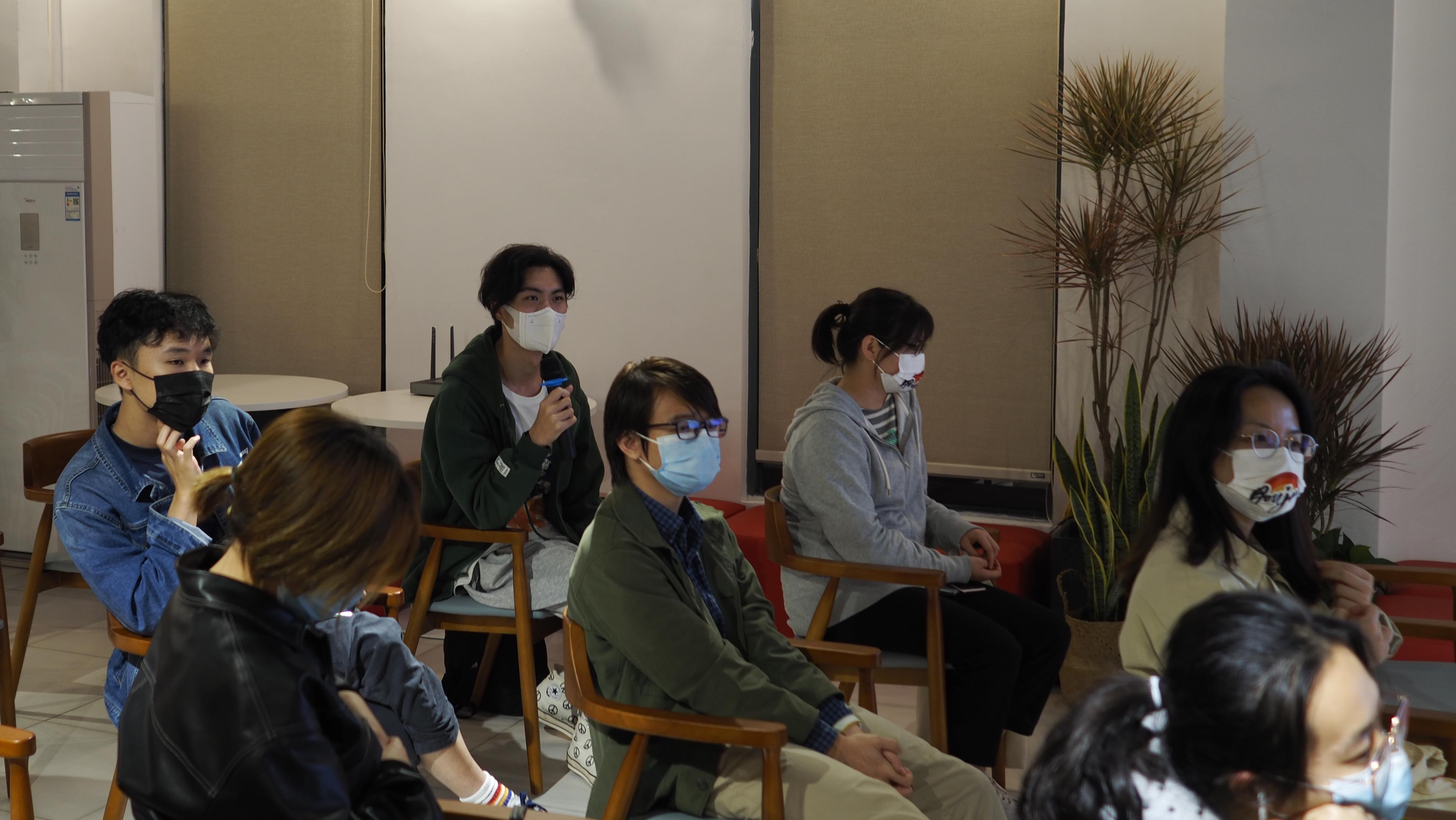
On December 17th at 6 p.m., a French art lecture of the French cultural experience month series activity was held at Phoenix Language Village. Mr. He Junyan, master of Plastic Arts from the School of Arts and Humanities of Université Paris I - Panthéon-Sorbonne and master of National School of Fine Arts, Paris, France, was invited to give an in-depth analysis of the development of French art, photography and painting, as well as the basic knowledge of new wave films. Mr. He specializes in painting, video, plastic art, art history, contemporary art philosophy and aesthetic theory, social aesthetic education practice, interdisciplinary art, etc. He has been the art curator of Art Space Without Borders, Paris, France, and has participated in many international art exhibitions and forums. Ms. Li Yimeng, project director of Phoenix Language Village, presided over the lecture, and students from BNU Zhuhai and BNUZ participated in the sharing activity on French art.

Starting from the geographical map of Europe, Mr. He explained the origin of European culture, the origin of Greek art and art standards. He then introduced the collections of famous art centers in the world, such as the Metropolitan Museum of Art in New York and the Louvre in Paris, and introduced the representatives of classical literature in turn.

Classical painting
Hubert Robert (1733-1808)
Hubert Robert's paintings of Southern France and the ruins of Ancient Roman architecture are filled with a taste of humanistic society. People can resonate with a sense of nostalgia when appreciating his works again and again. When talking about the relationship between art and life, Mr. He also mentioned that in the modern fast-paced practical society, we have a sense of distance from high culture.
Eugène Delacroix (1863--1798)
Professor He introduced his famous representative work La Liberté guidant le peuple . Under his painting brush, there are impoverished refugees in North Africa and extreme extravagance of dynasties in danger. This spiritual and visual contrast can be seen as an appeal of excessive romanticism.
Photography:
Eugene Atget (1857-1927)
While appreciating the photographic works together, the audience also discussed about how to judge their value. Mr. He proposed that it should depend on whether the audience could find real artistic conception and arouse resonance in the works. At last he stressed that Atget also uses layering to accentuate grand visual effects and perspective to create shocking impacts in his works.
Henri Cartier-Bresson (1908-2004)
He was a famous humanistic photographer. The themes of his works are often decisive moments, reflecting the relationship between the timing of photography and the passing of time. Within his concept of instant photography, the immediacy and timeliness are clearly reflected. In his works, there are not only brilliant great men and cruel wars, but also small individuals in the society, which brings us to think about contrasts.
Modern Art
Claude Monet (1840-1926)
Monet is the founder of Impressionism. In his visual sense, light plays a decisive role: “the color belongs to light.” His works, such as Sunrise , and the Lupin Cathedral series, reflect that he is extremely sensitive to the change and direction of light. Finally, Mr. He talked about the fact that his own studio is built without a security net to enhance the perception of light.
Henri Matisse (1869-1954)
As the voice of brutalism in modernism, Matisse was good at using exaggerated color, oversaturation, and contrast colors to bring a strong visual impact to the audience, and it is also his exploration and attempt of painting under the background of time. In addition, Mr He also introduced Matisse’s exploration of the body structure in paper cutting and his creation and innovation of art forms.
Christian Boltanski (1944--2021)
As a decorative artist, he specialized in highlighting individual identities in his work, such as portraits of individuals and clothing of the deceased. At the same time, because of his Jewish origin, re-thinking and re-recognition of history and events are often aroused when the audience is appreciating his works.
At the end of the lecture, students actively communicated with Mr. He.

Q: Mr. He, what are the characteristics of new wave films?
A: New wave is a kind of fashionable experimental film type. It looks at how to lead the young people's ideological trend. Cutting and interludes are often used in the films, trying to find a linear way of narration. The endings of most new wave films are experimental and open. Actually, the film itself is the ending, which is thought-provoking.
Q: Mr. He, do real artists create to express themselves or to please others?
A: If he is a genius, he must start from the individual, from the complete self, because this is the way to discover the infinite potential. But some artists will cater to the needs of the audience for the market trend. Thus, this needs to be considered according to the specific situation.
Question: Mr. He, is there still a high threshold for artistic creation and learning as in the classical period?
A: I would say that in this era of accelerated development, it is the over-universality of production that makes art difficult and complicated. We should find another way to enlighten the audience and do our best to preserve the true art.
Tanslator: Yan Tingting
Proofreading: Martin Wittenberg